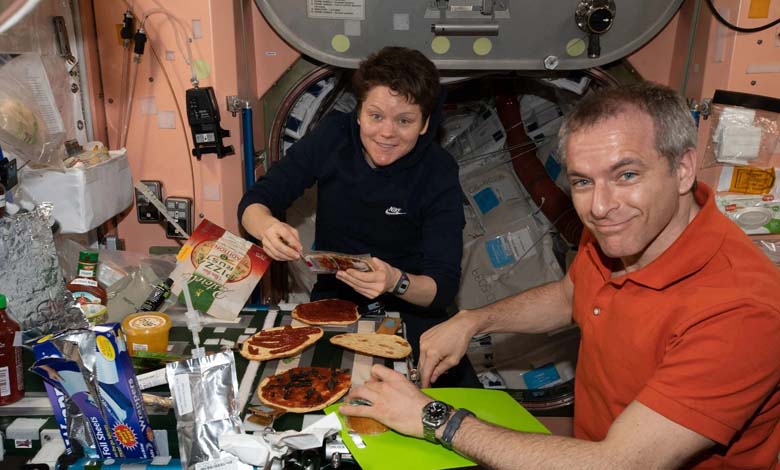Promising Study for Space Travelers’ Food in the Future

A team of French researchers is trying to determine whether astronauts will be able to produce fish on the moon in the future by recently studying the resistance of zebrafish eggs to changes in gravity.
In an interview with the French news agency, Cyril Berzibela, a marine biologist at the French Research Institute for Sea Exploitation, recently published an article on this topic in the journal “Frontiers in Space Technologies,” saying that “this issue is very promising.”
In 2019, the specialist in aquaculture launched the “Lunar Hatch” program in response to a call from the European Space Agency (ESA) to provide ideas regarding the establishment of a base on the moon.
The researcher says, “With the revival of the race to the moon, we wonder how space travelers will be able to consume food on its surface.” He adds, “Currently, all countries rely on producing vegetables or tomatoes in space. However, these foods are devoid of essential fibers and amino acids of animal origin, and space travelers will not have access to a balanced diet in the future.”
He continues, “Also, raising animals 360,000 kilometers away from Earth could be a significant psychological factor.”
The idea involves sending a small fish tank to the moon, with each side measuring ten centimeters and containing two hundred fish eggs. The fish will grow in a closed aquatic life system supplied with the available moon water.
The biologist says, “We do not know the quality of this water, but when we find out, we will be able to connect fish to it.”
The water discovered in the solar system so far is saline, which increases the possibility of growing sea fish like zebrafish as a model for fish production.
However, before building an aquatic life system, researchers need to ensure that the fish can withstand the vibrations during their journey to the moon.
“Mirror Effect” As part of “Lunar Hatch,” a program supported by the National Center for Space Studies, researchers subjected zebrafish and fat-free eggs to vibrations equivalent to those of the Russian “Soyuz” rocket launch during an experiment conducted inside a laboratory.
Berzibela, who recently graduated from the International Space University in France, says, “There are many rockets. But I was told that Soyuz broke all our records in terms of vibrations. If the fish can withstand its vibrations, this means that they will endure in any type of rocket.”
The second experiment, the results of which were published on Monday, involved exposing zebrafish eggs to excessive gravity similar to the speed of a rocket for ten minutes, followed by 39 hours of zero gravity, simulating a journey to the moon.
At the end of this experiment conducted at the University of Lorraine in Nancy (northeastern France), the percentage of eggs that hatched was similar to the percentage of eggs that remained under Earth’s gravity. No signs of stress appeared on the fish embryos after hatching in zero gravity.
The researcher indicates that “excessive microgravity were two sensitive points.”
The next step, which is under experimentation, aims to test the impact of cosmic radiation on hundreds of fertilized zebrafish eggs by exposing them to proton and neutron fluxes in the particle accelerator at the Institute for Radiation Protection and Nuclear Safety in Cadarache (southeastern France).
Berzibela points out that “what distinguishes aquatic creatures is their existence in water, which serves as a shield against many particles.”
Before potential application on the moon, this research may have importance on Earth concerning the development of fish production systems without environmental impact.
The researcher says, “There is a mirror effect between what we want to do on the moon and what we want to achieve on Earth.”
He adds, “On the moon, we want to recycle all the molecules because that is important for every molecule. On Earth, we want to preserve the environmental wealth.”












